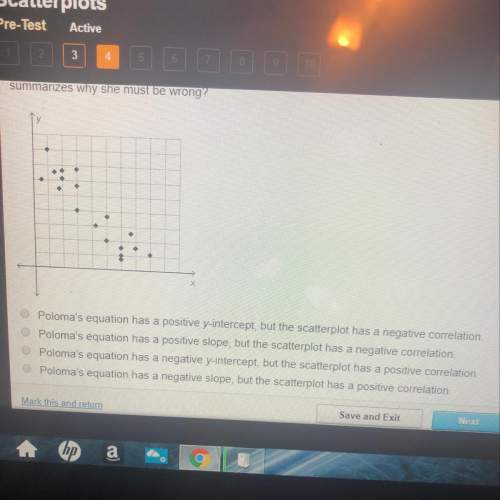Reactant a can participate in both of these reactions:
1) a + b c + d grxn = –15.6 kj
2)...

Mathematics, 22.12.2019 04:31 bajus4121
Reactant a can participate in both of these reactions:
1) a + b c + d grxn = –15.6 kj
2) a + e f + g grxn = –20.5 kj
reaction 1 has a much higher rate than reaction 2 under the same reaction conditions. explain this observation in terms of activation energy.


Answers: 1


Another question on Mathematics


Mathematics, 21.06.2019 21:30
(c) the diagram shows the first three shapes of a matchsticks arrangement.first shape = 3second shape = 5third shape = 7given m represents the number of matchstick used to arrange the n'th shape.(i) write a formula to represent the relation between m and n. express m as the subjectof the formula.(ii) 19 matchsticks are used to make the p'th shape. find the value of p.
Answers: 2

Mathematics, 22.06.2019 00:20
What is the equation of a line that passes through points (0, 4) and (-4,-8)?
Answers: 1

Mathematics, 22.06.2019 01:30
If you were constructing a triangular frame, and you had wood in the length of 4 inches, 4 inches, and 7 inches, would it make a triangle? would you be able to create a frame from these pieces of wood?
Answers: 2
You know the right answer?
Questions

Biology, 20.09.2020 16:01


Mathematics, 20.09.2020 16:01




History, 20.09.2020 16:01


Mathematics, 20.09.2020 16:01

Social Studies, 20.09.2020 16:01



Mathematics, 20.09.2020 16:01











